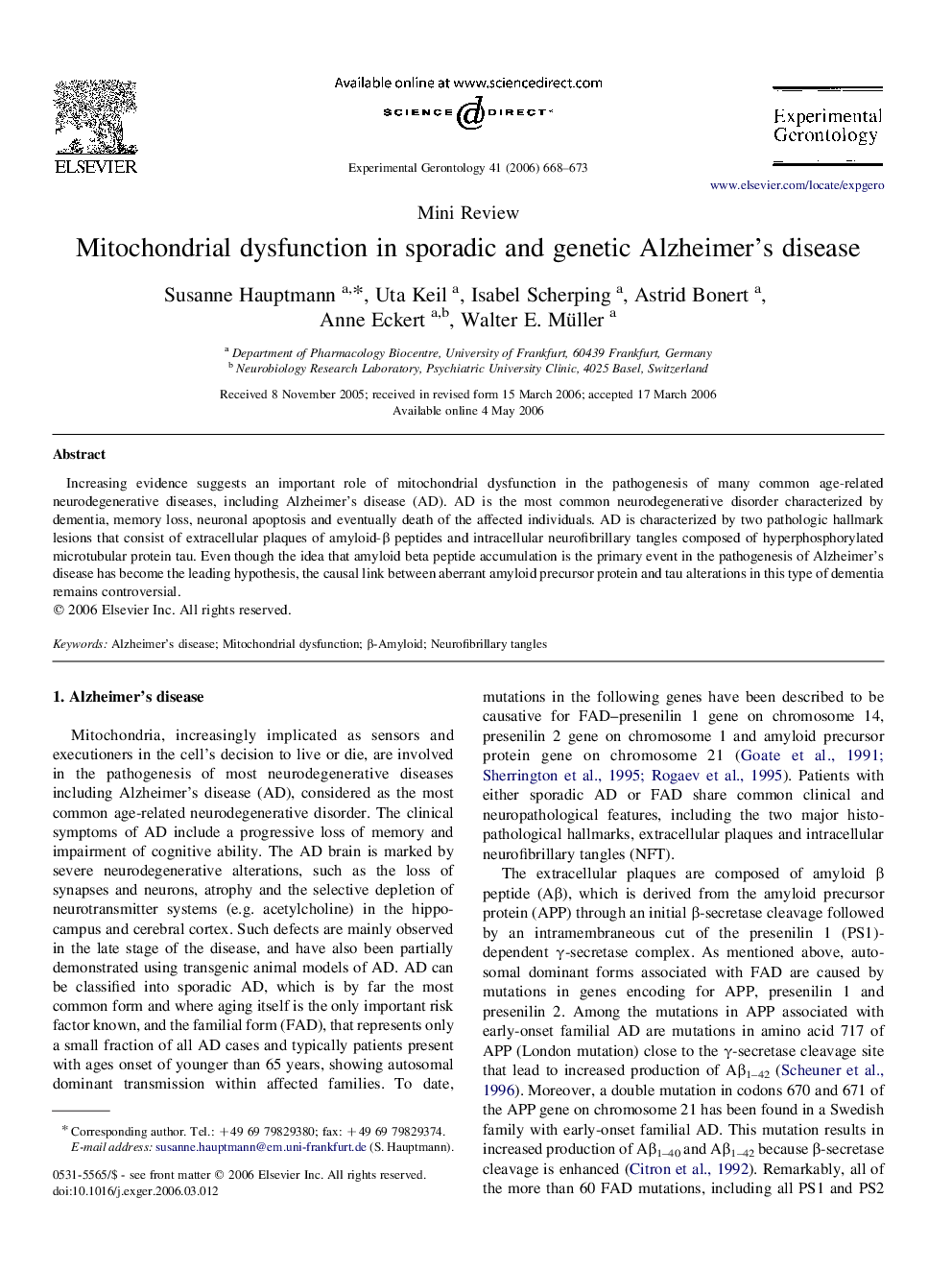| Article ID | Journal | Published Year | Pages | File Type |
|---|---|---|---|---|
| 1907458 | Experimental Gerontology | 2006 | 6 Pages |
Increasing evidence suggests an important role of mitochondrial dysfunction in the pathogenesis of many common age-related neurodegenerative diseases, including Alzheimer's disease (AD). AD is the most common neurodegenerative disorder characterized by dementia, memory loss, neuronal apoptosis and eventually death of the affected individuals. AD is characterized by two pathologic hallmark lesions that consist of extracellular plaques of amyloid-β peptides and intracellular neurofibrillary tangles composed of hyperphosphorylated microtubular protein tau. Even though the idea that amyloid beta peptide accumulation is the primary event in the pathogenesis of Alzheimer's disease has become the leading hypothesis, the causal link between aberrant amyloid precursor protein and tau alterations in this type of dementia remains controversial.
